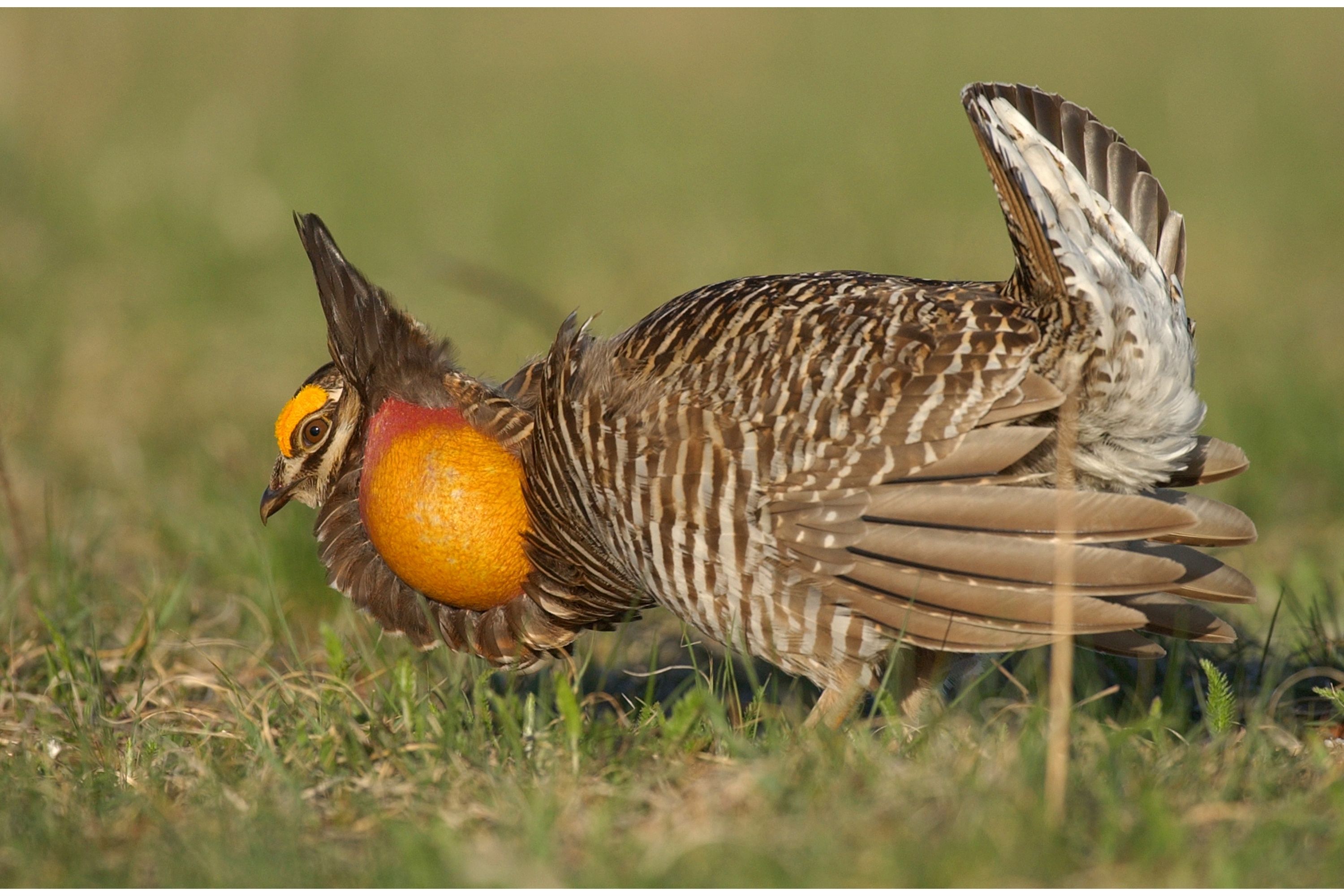Greater prairie chicken
(Tympanuchus cupido)

Description
The greater prairie chicken or pinnated grouse (Tympanuchus cupido), sometimes called a boomer, is a large bird in the grouse family. This North American species was once abundant, but has become extremely rare and extirpated over much of its range due to habitat loss.Conservation measures are underway to ensure the sustainability of existing small populations. One of the most famous aspects of these creatures is the mating ritual called booming. Adults of both sexes are medium to large chicken-like birds, stocky with round-wings. They have short tails which are typically rounded. Adult males have orange comb-like feathers over their eyes and dark, elongated head feathers that can be raised or lain along neck. They also possess a circular, un-feathered neck patch which can be inflated while displaying; this, like their comb feathers, is also orange. As with many other bird species, the adult females have shorter head feathers and also lack the male's yellow comb and orange neck patch. Greater prairie chickens prefer undisturbed prairie and were originally found in tallgrass prairies. They can tolerate agricultural land mixed with prairie, but fewer prairie chickens are found in areas that are more agricultural. Their diet consists primarily of seeds and fruit, but during the summer they also eat green plants and insects such as grasshoppers, crickets, and beetles.These birds were once widespread all across the oak savanna and tall grass prairie ecosystem. Greater prairie chickens are not threatened by severe winter weather. When the snow is thick they "dive" into the snow to keep warm. A greater threat to the prairie chickens comes in the form of spring rains. These sometimes drenching rains can wreak havoc on their chicks. Another major natural threat is drought. A drought can destroy food and make it difficult for the chicks. Human interactions are by far the greatest threat. The conversion of native prairie to cropland is very detrimental to these birds. It was found in a radio telemetry study conducted by Kansas State University that "most prairie chicken hens avoided nesting or rearing their broods within a quarter-mile of power lines and within a third-mile of improved roads." (Kansas Department of Wildlife and Parks) It was also found that the prairie-chickens avoided communication towers and rural farms.
Taxonomic tree:







